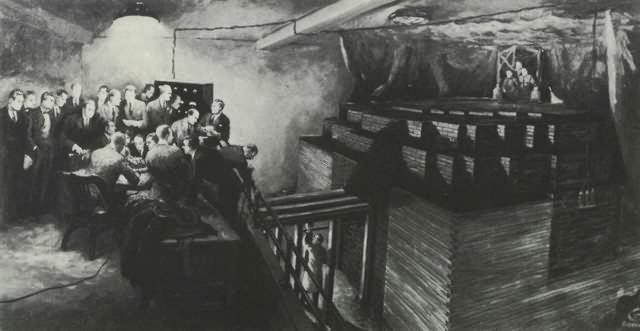The Manhattan Project, the top-secret American effort to build an atomic bomb during World War II, is a name that often sparks curiosity. Why “Manhattan”? This article delves into the origins of the project’s name and explores its fascinating history.
The project’s seemingly misleading name is actually rooted in its early organizational structure. While research and production spanned across numerous secret sites throughout the United States and Canada, the project’s initial headquarters were located in Manhattan, New York City, at 270 Broadway.
The Manhattan Engineer District (MED), the official military designation for the project, followed the standard Corps of Engineers practice of naming districts after the city in which they were headquartered. This seemingly mundane bureaucratic detail ultimately gave rise to the now-infamous moniker, “Manhattan Project.” Led by General Leslie R. Groves, the project quickly outgrew its initial Manhattan offices and its headquarters were moved to Washington D.C. However, the name stuck.
The Roots of the Project
The Manhattan Project didn’t emerge out of thin air. It was born out of the fear that Nazi Germany was pursuing its own atomic weapons program. In 1938, German scientists Otto Hahn and Fritz Strassmann discovered nuclear fission, splitting the atom and unleashing its tremendous energy. This breakthrough, coupled with Albert Einstein’s warning to President Roosevelt about the potential for a German atomic bomb, spurred the United States into action.
Initial research progressed slowly until the British MAUD Committee, in 1941, affirmed the feasibility of an atomic bomb and urged collaboration with the Americans. This report galvanized the U.S. government, leading to the reorganization of its atomic research under the S-1 Committee and the newly formed Office of Scientific Research and Development. As the project transitioned from theoretical research to practical development, the Army was brought in to provide the necessary resources and infrastructure, leading to the formal establishment of the Manhattan Project in August 1942.
A Nation-Wide Undertaking
While the project’s administrative origins lay in Manhattan, its operations were spread across the country. Los Alamos, New Mexico, became the hub for weapons research and development under the leadership of J. Robert Oppenheimer. Oak Ridge, Tennessee, housed massive uranium enrichment plants crucial for producing the bomb’s fuel. Hanford, Washington, was the site of plutonium production reactors. Other sites, including research facilities at universities like Berkeley and Columbia, and even locations in Canada, played vital roles. The project employed over 600,000 people, a testament to its immense scale and national importance.
From Research to Reality
The culmination of the Manhattan Project’s efforts was the Trinity test on July 16, 1945, the world’s first atomic explosion. This successful test paved the way for the devastating bombings of Hiroshima and Nagasaki in August 1945, ultimately leading to Japan’s surrender and the end of World War II. The “Little Boy” uranium bomb dropped on Hiroshima and the “Fat Man” plutonium bomb dropped on Nagasaki unleashed unprecedented destructive power, forever altering the course of history.
A Lasting Legacy
The Manhattan Project’s legacy extends far beyond the end of the war. It ushered in the nuclear age, sparking a global arms race and raising profound ethical questions about the use of atomic weapons. The project also spurred advancements in nuclear science and technology, contributing to the development of nuclear power and medical applications. Today, the Manhattan Project remains a subject of intense historical scrutiny and debate, reminding us of the immense power of scientific discovery and its potential for both destruction and progress. Sites associated with the project, such as Oak Ridge, Hanford, and Los Alamos, are now part of the Manhattan Project National Historical Park, preserving this crucial chapter in American history.


